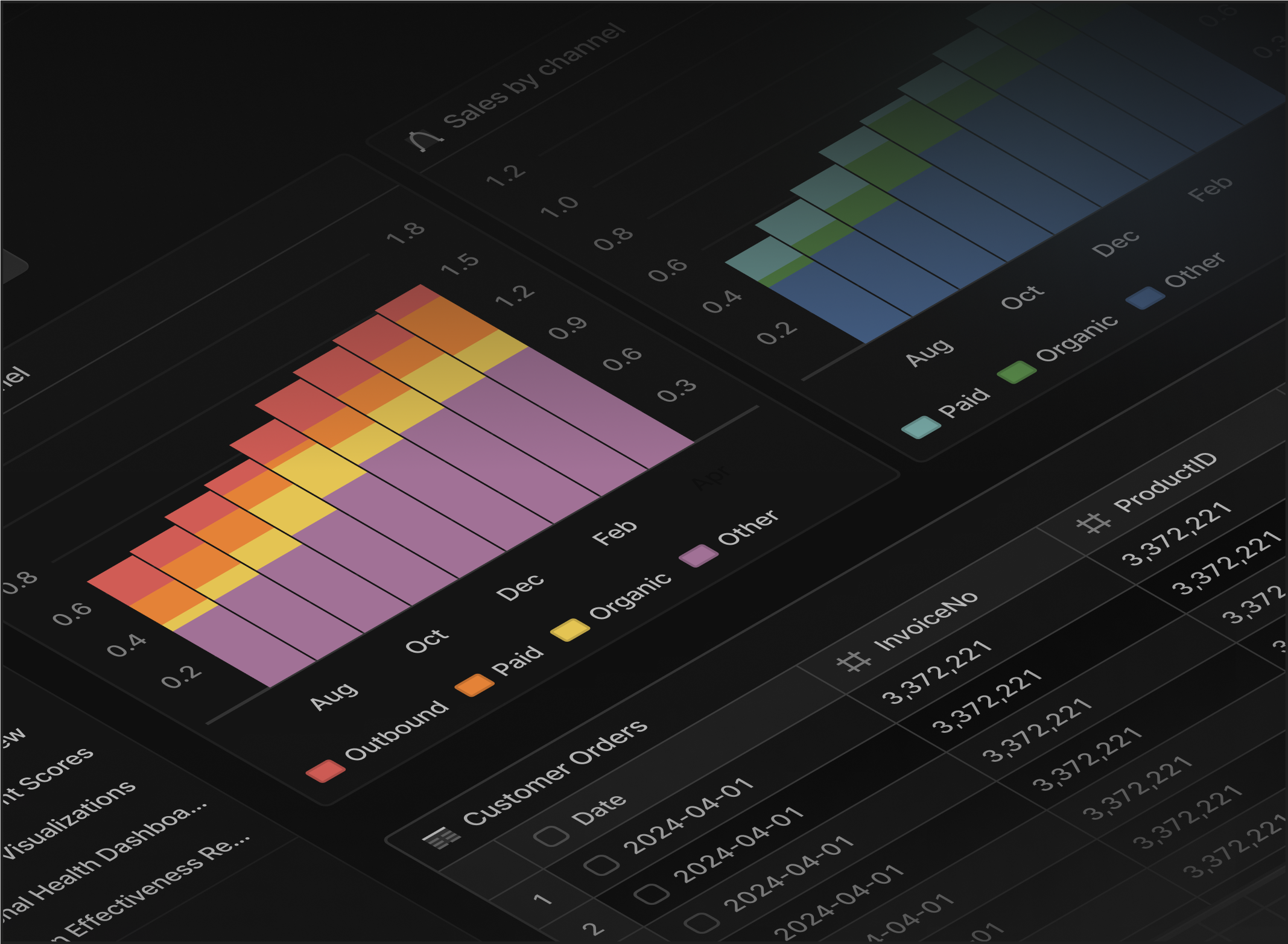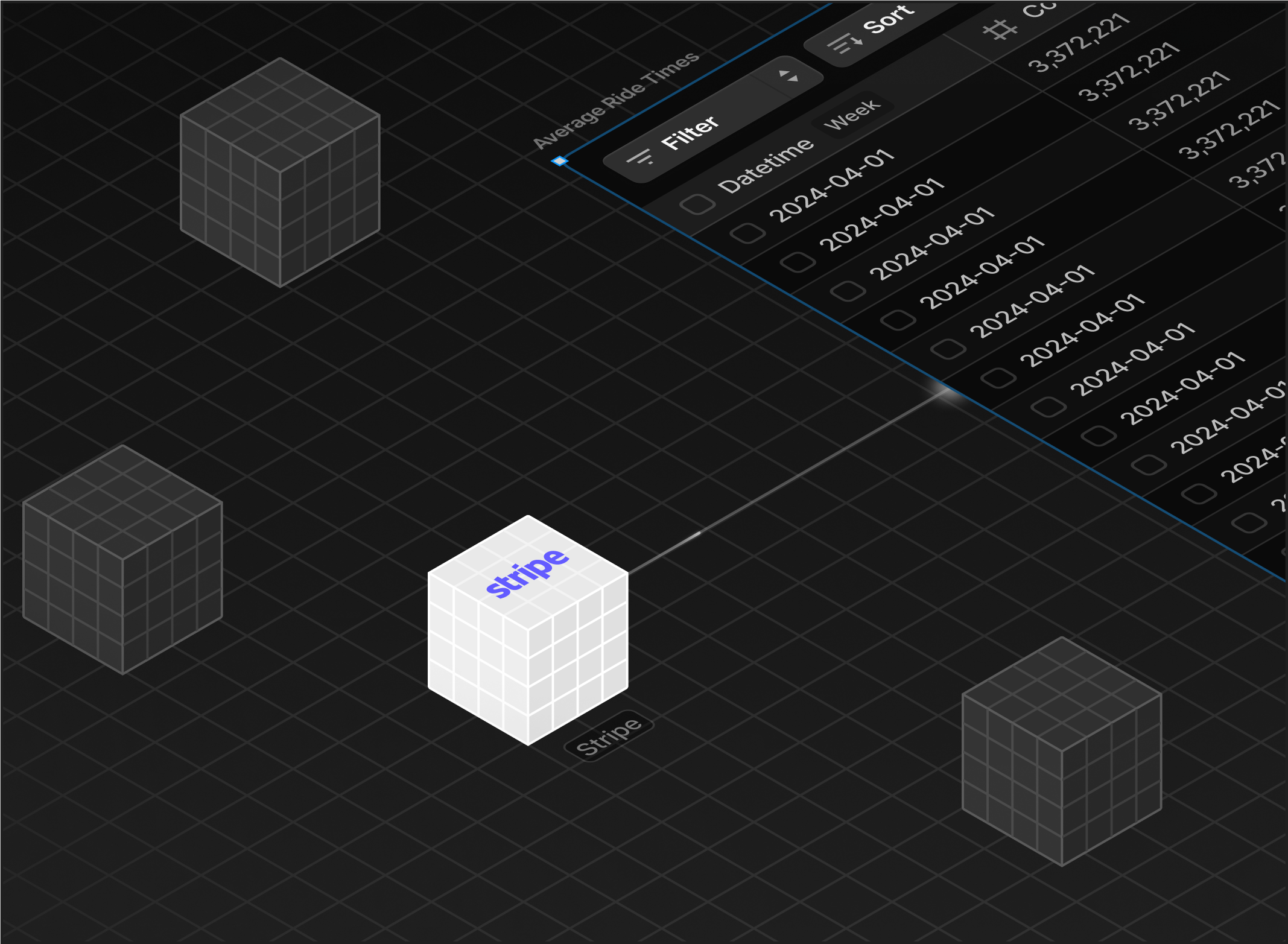Connector Database / GitLab
Analyze your GitLab data with AI
Build interactive dashboards, generate automated reports, and unlock business intelligence insights from your GitLab data with AI-powered assistant.
_

Start with a question
Generate automated reports and business intelligence insights from your GitLab data—as fast as you can ask them.


Build dashboards and data visualizations
Transform your conversation into dynamic data visualizations on an intuitive data canvas.
Integrate all your data
Unify your GitLab data with DuckDB-powered data warehouse including PostgreSQL, MySQL and Stripe.

Available GitLab Data
Extracts GitLab project, group, and user data, including issues, merge requests, commits, branches, releases, tags, labels, milestones, CI/CD pipelines and jobs, vulnerabilities, and configuration variables. This enables engineering analytics such as delivery velocity, code review throughput, CI reliability, release cadence, contributor activity, and security posture across projects and groups.
Group
Organizational container for related projects and members; enables portfolio rollups across teams, cross-project throughput, and program-level governance.
Project
A single repository and workspace for code and work tracking; supports analysis of repository activity, CI/CD health, releases, and contributor engagement at the project level.
User
Contributors and members with access to groups and projects; enables analysis of author/reviewer workload, activity, and team-level performance segmentation.
Issue
Work items tracked in projects; powers backlog health, throughput, and cycle/lead time analyses by label, assignee, and milestone.
Epic
Cross-project initiatives grouping related issues (Ultimate); supports program-level progress tracking, scope management, and predictability across teams.
Milestone
Time-bound goals at the project or group level; used for tracking delivery against plans, burndown, and schedule adherence.
Merge Request
Code change proposals and reviews; enables metrics on review throughput, cycle time, approvals, and merge rates.
Commit
Atomic code changes in the repository; supports analysis of commit velocity, code churn, contributor activity, and change volume over time.
Pipeline
CI/CD pipeline executions for a project; used to monitor success rates, durations, and trends in build and deployment reliability.
Job
Individual CI jobs within a pipeline; enables step-level reliability, retry behavior, and bottleneck analysis.
Release
Versioned releases with notes and associated tags; supports analysis of release cadence, change volume, and deployment readiness.
Label
Taxonomy applied to issues and merge requests; enables segmentation of work by type, priority, team, or component for reporting.
Vulnerability
Security findings detected in projects; supports risk posture tracking, severity distributions, and remediation throughput.
Authentication Required
Uses a GitLab Personal Access Token you create in your GitLab profile to authenticate via the Private-Token header
Getting started with
GitLab Analytics & Business Intelligence
Connect your GitLab data
Connect to GitLab once and automatically sync data to your centralized data warehouse for real-time reporting and analytics.
Build business intelligence models
Create automated reports, dashboards, and data visualizations with customizable business logic and AI-powered insights for consistent analytics across your organization.
Generate reports and insights
Create interactive dashboards, automated reports, and data visualizations with AI-powered business intelligence. Share live analytics and scheduled reporting with your team.
Want to see how easy it is to get started?
GitLab usersDefinite
People love Definite because it lets you focus on what matters. Setting up your own data infrastructure doesn't make your beer taste better. Skip the tedium and start at analytics.
I was leading the efforts of setting up a business intelligence function. I was surprised how complex this all was to do even today. It's something that every tech company would need at some point but it hasn't been simplified. You need a whole team focused on building a data warehouse, setting up the right pipelines, and then integrating a BI tool on top.Definite wasn't only the answer to this problem, it tackled the next problem I knew I'd have as soon as the BI tool was ready — how do we get non-technical teams and people to learn and utilise such a tool.
Our analytics before Definite consisted of dozens of Excel sheets that took hours to update. Manual updates led to errors. Everyone questioned the accuracy of the numbers. Many people just stopped looking at the reports.After Definite, everything ran like clockwork.We immediately saved thousands of dollars per month in the time spent updating reports and have built strategies (e.g. improved ROI on ad spend, inventory management, etc.) on the data that will yield millions to our bottom line.
Have questions?
Find answers.
Definite has everything you need to deploy analytics within your company.
Data doesn't need to be so hard
Get the new standard in analytics. Sign up below or get in touch and we'll set you up in under 30 minutes.